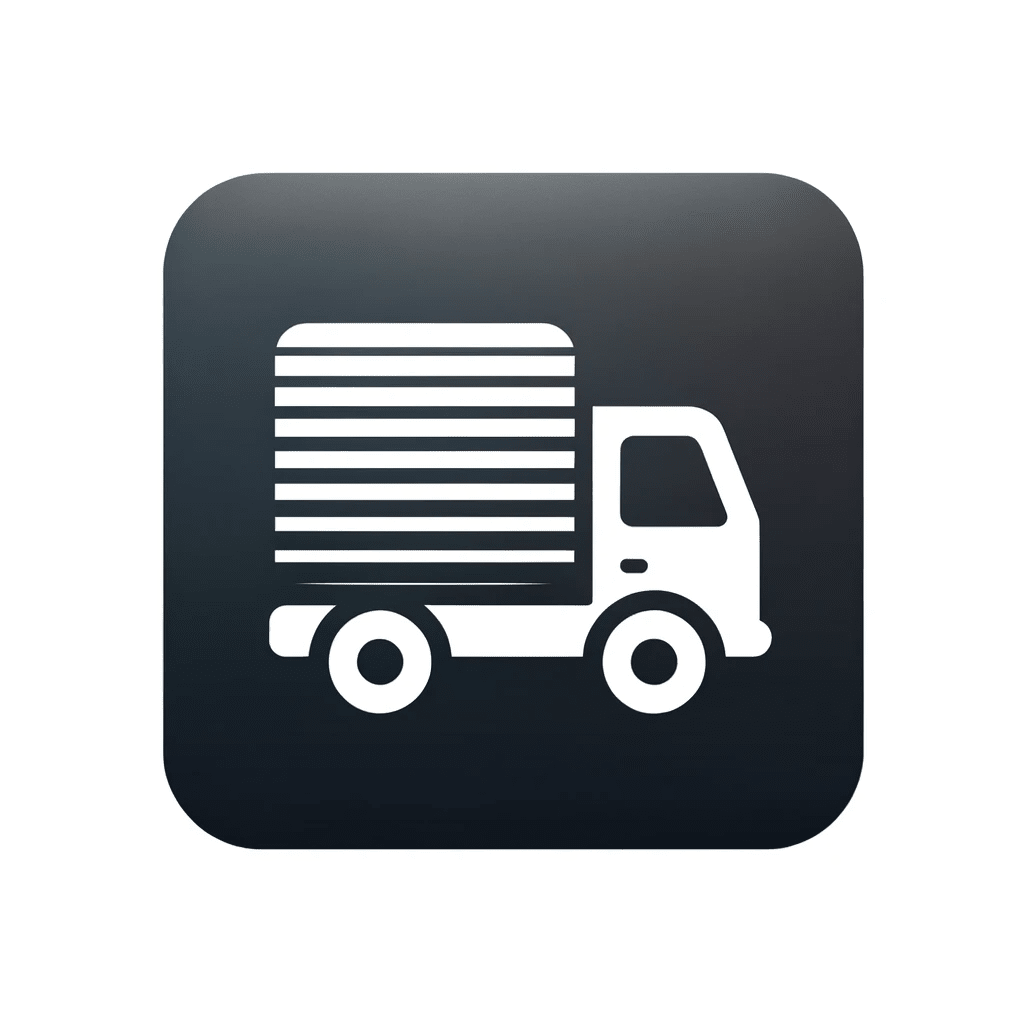6 herbs for natural menstrual pain relief backed by science
- READING TIME 7 MIN
- PUBLISHED November 02, 2023
- AUTHOR Donna
Key takeaways
- There is a laundry list of herbs and plants that are known to help relieve period pain and cramping. Most of them have been used for generations. Today, we also have a growing volume of research supporting their effectiveness.
- Many of these herbs have anti-inflammatory and sedative properties.
- Among most popular are raspberry leaves, ginger, peppermint, fennel, Chinese herbs and chamomile. If we missed something that works for you, reach out to us on Instagram. We would love to hear it!
6 herbs for natural menstrual pain relief backed by science
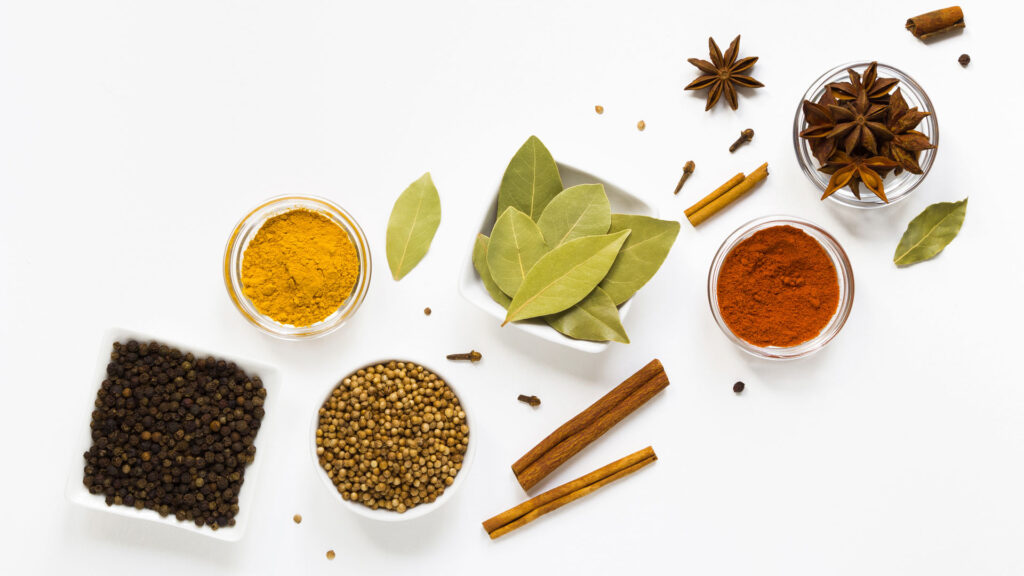
Periods can be a great opportunity for a monthly reset. That said, they can also make you feel the worst: bloated, moody, tense and crampy. Some discomfort and soreness is normal – keep in mind that there’s a lot of action going in your uterus at the time.
The good news is that you don’t have to assume the fetal position just yet – there is a long list of things you can take, eat, drink, use and apply to relieve period pain.
Painkillers with anti-inflammatory (known also as NSAIDs) or anti-spasmodic properties may relieve menstrual pain. Hormonal contraceptives are also prescribed to tame wild periods.
But as any other medication, all of these drugs may cause unpleasant side effects. In fact, around 11 to 14 percent of women+ that take NSAIDs experienced stomach problems, nausea, headaches or drowsiness. 1 NSAIDs may also trigger acid reflux or cause ulcers (painful sores in the stomach lining).
If popping pills isn’t your jam, you may want to first turn to natural menstrual pain relief and try certain herbs that have been known to ease (minor to moderate) pain during menstruations. In small doses, these plants have few side effects and are generally regarded as safe; although, you may still want to talk to your doctor before starting to use them regularly. Let’s now look at six herbs that are frequently used to fight period pain.

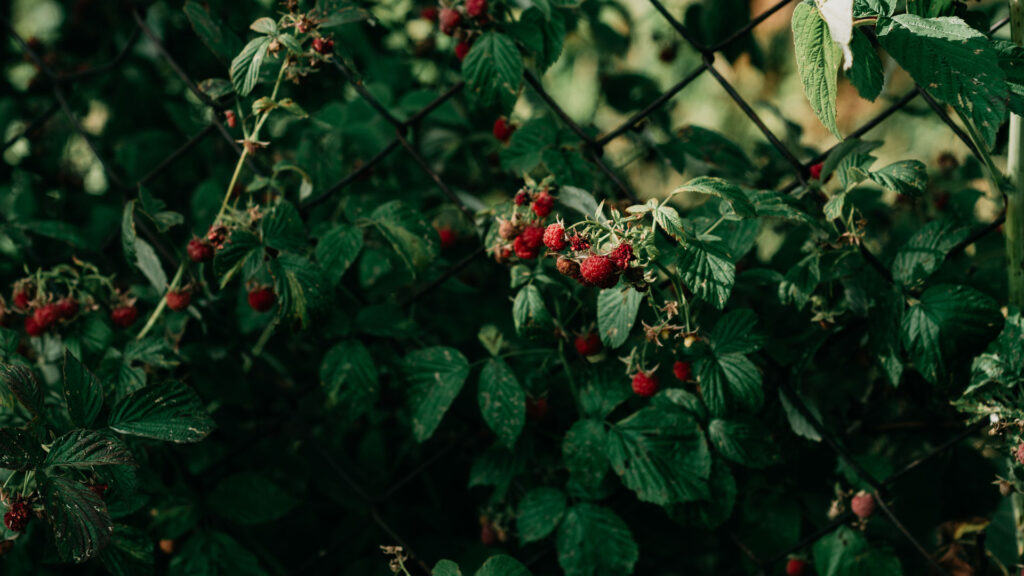
Raspberry leaf
Also known as the “woman’s herb”, raspberry leaves preparations have long been used to soothe and treat all kinds of ailments. Native American women+, for instance, traditionally drank tea made of raspberry leaves to facilitate labour and shorten its duration. 2 3
Raspberry leaves extract can also help relieve period pain. The European Medicines Agency confirmed the use of the plant as a “traditional herbal medicinal product” used to relieve minor menstrual cramps. The plant may also soothe mild cases of throat inflammation and diarrhoea, according to the same report. 4
The two ingredients that combat natural menstrual pain relief, giving the leaves their beneficial properties are tannins and fragrine. Fragrine, an alkaloid, is known to help increases blood flow to the uterus and tone & tighten the womb muscles. 5 The uterus is a hollow organ with many muscles that stretch and contract. By staying it well toned, the uterus can better perform its job. 6 Tannins, a polyphenol micronutrient packed with antioxidants, also has similar properties. Both are considered antioxidants. 7
The leaves of raspberry are also naturally high in magnesium, potassium, vitamins C and D and antioxidants 8 9 which protect cells from damage.
Our very own LADIVA is made out of raspberry leaves extract. It’s the first and only herbal medicine that has been approved to mitigate (minor) menstrual pain. Check out our dedicated page for more information.
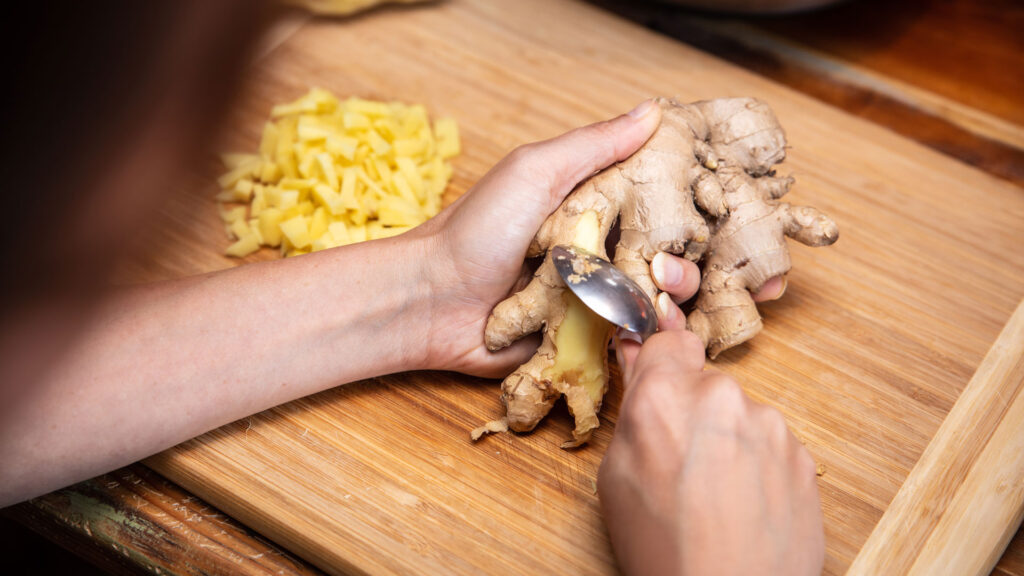
Ginger
Ginger, a relative of turmeric and cardamom, has long been used in traditional medicine to combat cramps. The secret of ginger’s power lies in its anti-inflammatory substances that block the excess formation of prostaglandins – a hormone-like substance which is linked to menstrual pain and inflammation.
One research has found that the spicy root of the ginger plant can effectively relieve period pain. 10 The trial involved 150 women+ with moderate to severe menstrual cramps. They received either 250 milligrams of powdered ginger root four times a day or a dose of nonsteroidal anti-inflammatory drugs.
Another study found that ginger also helped to control heavy menstrual bleeding. The participants who took ginger demonstrated a “dramatic” decrease in blood loss. 11 Ginger may also work for premenstrual syndrome (PMS), offering relief from the mood, physical, and behavioural symptoms. 12
Ginger has a slightly peppery and sweet taste, with a spicy aroma and is as such a beloved plant in kitchens around the world. You can increase your ginger input by pop it in soups and smoothies or prepare yourself a nice ginger tea with a drizzle of honey for some extra flavour.
Fennel
In the Mediterranean, fennel has been used for centuries for natural menstrual pain relief. 13 The plant with bulbous shape and the liquorice-like taste is teeming with anti-inflammatory properties that may help relax the uterine muscles and relieve period pain and cramping.
One study published in the AYU Journal investigated the impact of fennel tea on natural menstrual pain relief. The study consisted of fifty young women+ with severe menstrual pain. Fifty-two percent of participants who drank fennel tea reported “an excellent improvement” compared to eight percent in the placebo group. 14
One potential downside of taking fennel is that you might bleed more intensely during menstruation. 15 The claim, however, has not been sufficiently proven by clinical trials.
How to best consume fennel? We suggest you prepare yourself a hot brew. Add one teaspoon of fennel seeds to a cup of boiling water and heat it for 5 minutes. Remove from heat before it boils (boilling kills its nutrients), add honey and mix it well. Drink it three times a day for best results.
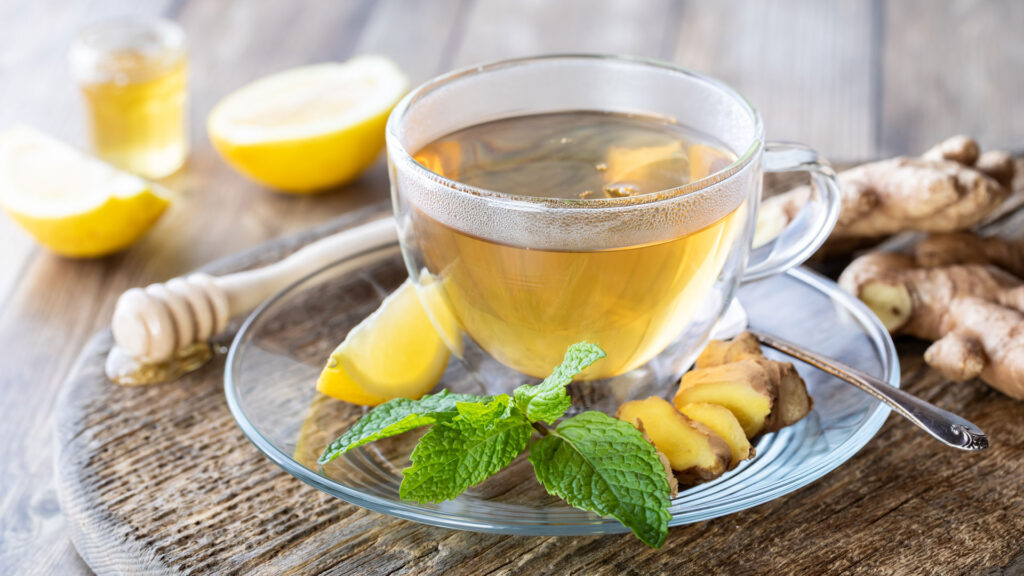

Peppermint
Peppermint is another invigorating herb that is thought to relieve period pain. One study found that peppermint (oil) relaxes the stomach muscles and reduces the duration and relieves period pain. Researchers concluded that the anti-spasmodic properties of menthol are behind these benefits. 16 The studies also found that peppermint reduces nausea and diarrhoea associated with menstruation.
You can make fresh tea by brewing one teaspoon of dried peppermint leaves for 10 minutes, then cool and strain. Keep in mind, however, that peppermint may worsen acid reflux. If you already have problems with reflux disease (known as GERD), try to avoid peppermint.

Chamomile
Oh, chamomile – one of the most ancient medicinal herbs known to mankind. It is said that there are more than one million cups of chamomile tea consumed each day. The herb is especially famous for its natural calming effects and has been touted to have anti-inflammatory properties.
The antioxidants in chamomile tea may also help calm discomfort in the tummy, relieve menstrual pain, cramps and, lessen PMS mood swings 17 and decrease heavy bleeding. 18 One study also looked into the effectiveness of chamomile against cyclic breast pain which is a common premenstrual syndrome. They found that chamomile is “safe and effective” for treating this type of pain. 19
Need a tip to prepare the “period” chamomile tea? Dip a tea bag into hot water and let it steep for 10 minutes. Add lemon juice or honey and drink two cups each day during the week before your period starts.
Chinese herbs
Chinese herbal medicine has also been used for centuries to ease menstrual problems. In more modern times, one systematic review of thirty-nine trials found “promising evidence” supporting the use of Chinese herbal medicine for natural menstrual pain relief. Most participants were given formulas containing five or six herbs, such as Chinese angelica root, fennel fruit, liquorice root, cinnamon bark, and red peony root. 20

If you can’t relieve period pain, talk to your doctor
Sometimes menstrual cramping isn’t “just” period pain. It can point to a certain underlying medical condition. In these cases, herbs and plants or painkillers may not help.
This kind of menstrual pain can stem from the issues of the reproductive organs. The most frequent causes are different infections, uterine fibroids and endometriosis. The pain, also known as secondary dysmenorrhea by doctors, is typically more severe in comparison to primary dysmenorrhea and it lasts longer. It can also gradually worsen, occurring outside menstruation or ovulation while standard treatments that work with primary dysmenorrhea are less effective. If you suspect or worry about your “unusual” period, we encourage you to see your gynaecologist.
REFERENCES
- https://www.cochrane.org/CD001751/MENSTR_nonsteroidal-anti-inflammatory-drugs-dysmenorrhoea
- https://herbsocietyblog.wordpress.com/2020/01/13/raspberry-herb-of-the-year-and-herb-of-the-month-history-and-lore/#:~:text=Teas%20of%20raspberry%20leaves%20were,preservation%20and%20ease%20of%20transportation.
- https://www.ncbi.nlm.nih.gov/pmc/articles/PMC4931538/#B21-antioxidants-05-00017
- https://www.ema.europa.eu/en/documents/herbal-summary/raspberry-leaf-summary-public_en.pdf
- https://www.ncbi.nlm.nih.gov/pmc/articles/PMC2162889/pdf/brmedj04059-0008.pdf
- https://www.ncbi.nlm.nih.gov/pmc/articles/PMC3407953/
- https://pubmed.ncbi.nlm.nih.gov/22082102/
- https://www.agriculturejournals.cz/publicFiles/37219.pdf
- https://www.ema.europa.eu/en/documents/herbal-report/final-assessment-report-rubus-idaeus-l-folium_en.pdf
- https://pubmed.ncbi.nlm.nih.gov/19216660/
- https://pubmed.ncbi.nlm.nih.gov/25298352/
- https://www.ncbi.nlm.nih.gov/pmc/articles/PMC4040198/
- https://www.ncbi.nlm.nih.gov/pmc/articles/PMC3611645/
- https://www.ncbi.nlm.nih.gov/pmc/articles/PMC3611645/
- https://www.degruyter.com/document/doi/10.1515/jcim-2017-0154/html
- https://www.ncbi.nlm.nih.gov/pmc/articles/PMC4979258/
- https://www.ncbi.nlm.nih.gov/pmc/articles/PMC6970572
- https://pubmed.ncbi.nlm.nih.gov/32322432/
- https://pubmed.ncbi.nlm.nih.gov/29072514/
- https://www.cochranelibrary.com/cdsr/doi/10.1002/14651858.CD005288.pub3/full
